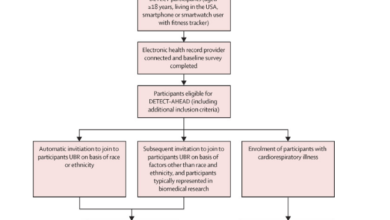Surge in E-Bicycle Injuries: A Comprehensive Analysis of Trends and Implications in the United States

A research study led by Dr. Adrian M. E-Bicycle Injuries Fernandez and his team from the University of California in San Francisco has shed light on a concerning surge in electric bicycle (e-bicycle) injuries in the United States. The study, utilizing data from the National Electronic Injury Surveillance System spanning from 2017 to 2022, aimed to estimate the number of patients with e-bicycle-related injuries presenting to U.S. emergency departments.
E-Bicycle Injuries
The findings revealed a staggering increase in e-bicycle injuries over the five-year period, with a statistically significant 30-fold rise, exceeding 99 percent annually. This surge translated into an estimated 45,586 e-bicycle injuries during the study period, leading to a substantial 43-fold increase in hospitalizations, exceeding 108 percent annually. These numbers underscore the urgent need for a closer examination of the safety implications associated with the growing use of e-bicycles.
One notable trend observed in the study was a shift in the demographics of e-bicycle injuries. While injuries among children (aged 0 to 13 years) increased, accounting for a larger proportion of total injuries, there was a contrasting decrease in injuries among young adults aged 18 to 34 years. This shift highlights the need for targeted safety measures and awareness campaigns, recognizing the distinct patterns of e-bicycle injuries across age groups.
Of particular concern is the significant rise in head trauma resulting from e-bicycle accidents. The incidence of head injuries was approximately 49 times higher in 2022 compared to 2017, outpacing the overall increase in e-bicycle injuries. Traumatic brain injuries, which are more severe in e-bicyclists than in traditional bicyclists, represent a critical aspect that demands further examination. The authors emphasize the urgent need to understand the factors contributing to this disproportionate increase in head injuries, signaling potential gaps in safety measures and regulations.
One alarming aspect highlighted in the study is the consistently low rate of helmet usage among injured e-bicyclists. Less than half of the injured individuals (44 percent) wore helmets, indicating a critical gap in protective measures. The odds of sustaining head injuries were found to be 1.9 times greater in non-helmeted e-bicyclists compared to those who wore helmets. The study also reported a concerning trend of decreasing helmet use over the years, with a 5.6 percent annual decrease in helmet usage.
The implications of these findings extend beyond the rising numbers; they underscore the need for comprehensive strategies to address the safety concerns associated with the increasing popularity of e-bicycles. The study prompts a reevaluation of existing safety regulations and a call for targeted interventions to promote helmet use, especially among those most vulnerable to head injuries.
As e-bicycles continue to gain popularity as a sustainable and convenient mode of transportation, it becomes imperative to proactively address the associated risks. This research serves as a crucial foundation for policymakers, healthcare professionals, and safety advocates to collaboratively develop effective measures to mitigate the growing impact of e-bicycle injuries. The study not only highlights the urgency of the situation but also provides a valuable roadmap for future interventions aimed at ensuring the safety of e-bicycle users across all age groups.




